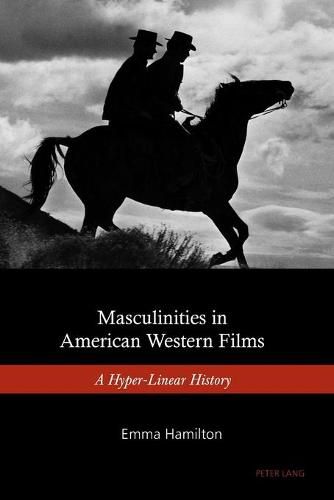Readings Newsletter
Become a Readings Member to make your shopping experience even easier.
Sign in or sign up for free!
You’re not far away from qualifying for FREE standard shipping within Australia
You’ve qualified for FREE standard shipping within Australia
The cart is loading…






This title is printed to order. This book may have been self-published. If so, we cannot guarantee the quality of the content. In the main most books will have gone through the editing process however some may not. We therefore suggest that you be aware of this before ordering this book. If in doubt check either the author or publisher’s details as we are unable to accept any returns unless they are faulty. Please contact us if you have any questions.
The Western embodies many of the stereotypes of masculinity: rugged, independent men in cowboy hats roam the barren landscapes of the American West, resolving conflicts with guns and tough talk. Where did these cowboys come from? What historical trends led to their emergence on screen? This book explores the relationship between the Western, film and historical representation and the ways in which masculine gender performance is itself historical. It posits a new interpretation of how history functions on film, termed hyper-linear history. Hyper-linear history creates the possibility of seeing film as a vehicle that makes the past immediately explicit and relevant, rendering historical understandings complex. The study offers a fresh exploration of American Western films made in the 1950s and 1960s, arguing that many Westerns of this period rely on the post-Civil War on-screen past to make sense of the tumultuous experiences of the period, to various effect. The films especially tap into the ways in which national economic, political, technological and social changes impact the performance of hegemonic masculinities. These films provide insight into the ways in which masculinities are performed and gender crises are expressed, explored and resolved.
$9.00 standard shipping within Australia
FREE standard shipping within Australia for orders over $100.00
Express & International shipping calculated at checkout
This title is printed to order. This book may have been self-published. If so, we cannot guarantee the quality of the content. In the main most books will have gone through the editing process however some may not. We therefore suggest that you be aware of this before ordering this book. If in doubt check either the author or publisher’s details as we are unable to accept any returns unless they are faulty. Please contact us if you have any questions.
The Western embodies many of the stereotypes of masculinity: rugged, independent men in cowboy hats roam the barren landscapes of the American West, resolving conflicts with guns and tough talk. Where did these cowboys come from? What historical trends led to their emergence on screen? This book explores the relationship between the Western, film and historical representation and the ways in which masculine gender performance is itself historical. It posits a new interpretation of how history functions on film, termed hyper-linear history. Hyper-linear history creates the possibility of seeing film as a vehicle that makes the past immediately explicit and relevant, rendering historical understandings complex. The study offers a fresh exploration of American Western films made in the 1950s and 1960s, arguing that many Westerns of this period rely on the post-Civil War on-screen past to make sense of the tumultuous experiences of the period, to various effect. The films especially tap into the ways in which national economic, political, technological and social changes impact the performance of hegemonic masculinities. These films provide insight into the ways in which masculinities are performed and gender crises are expressed, explored and resolved.